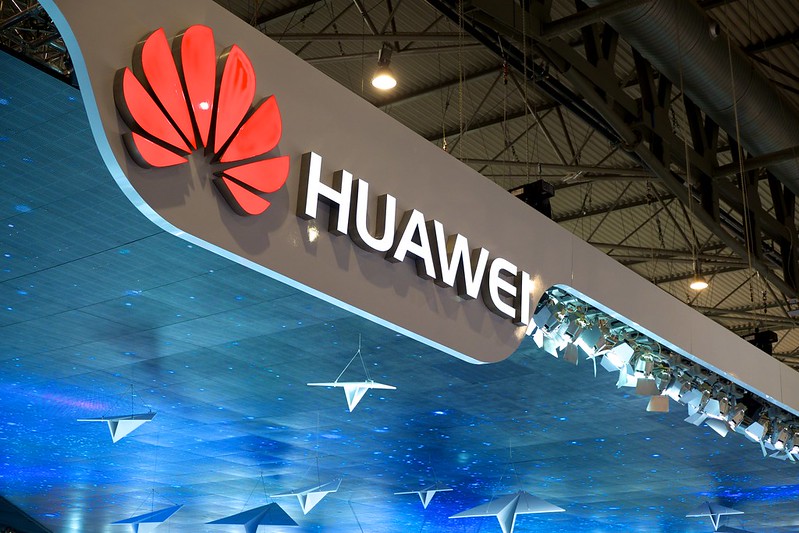
Is Rip and Replace a Viable Strategy to Handle Huawei?
By: Henry Rademacher
Since at least 2001, Chinese telecom giant Huawei has faced numerous allegations of illegal activities. From theft of intellectual property to providing material support to the Taliban, Huawei’s list of alleged crimes can sometimes read like something out of a Tom Clancy novel.
Huawei is the world’s largest manufacturer of telecom equipment, a position it has held since 2012. The massive subsidies Huawei receives from the Chinese government allow it to undercut competitors around the world.
Although Huawei claims to be an independent company, its ownership structure is ambiguous to say the least. Regardless of whether or not Huawei is partially owned by the Chinese government, the company is certainly beholden to them. Chinese law requires that all companies “support, assist and cooperate with the state intelligence work in accordance with the law.” If China asks Huawei to turn over every megabyte of customer data they have collected, Huawei is required to do so. If China suggest that Huawei load its 5G network with backdoors to be accessed by the Ministry of Public Security, Huawei is required to do so.
The issue of potential backdoors, not only in its 5G network, but possibly in every device manufactured by Huawei has placed them in the crosshairs of both President Donald Trump and the FCC. In November, the FCC took steps to limit the risk posed by Huawei and other companies deemed “security risks” by banning U.S. carriers from using Universal Service Fund (USF) money to purchase equipment from flagged companies. With an annual value above $8 billion, USF provides subsidies to smaller telecom companies, many of whom operate in rural, underserved areas.
The FCC’s recent move is a step in the right direction. Unfortunately, many U.S. companies already use Huawei products in their communications infrastructure. In 2018, the Rural Wireless Association stated that 25% of rural carriers use Huawei equipment. Huawei’s equipment is cheaper than that of its prime competitors, Ericcson and Nokia, making it an appealing option for smaller companies. Surprisingly, there is not U.S. company that manufactures and distributes telecom equipment on a scale comparable to Huawei.
Because the ban on companies using USF funds to purchase Huawei products does not address equipment already present in the U.S., FCC Chairman Ajit Pai has called for a “rip and replace” policy. This would mean identifying every piece of telecom equipment in the U.S. that originates from a source deemed a threat to national security, removing all of them, and replacing them with equipment from approved sources.
While the FCC has signaled that it is all in on rip and replace, the viability of such a program is currently difficult to assess. There is no consensus on how much equipment would need to be replaced, while the replacement process would surely be a costly one. Earlier this year, FCC Commissioner Geoffrey Starks estimated the cost could be over $1 billion. He implored Congress to provide the funds, and classified the risks posed by unsecure telecom infrastructure as a national security risk.
In June, Commissioner Starks hosted a stakeholder workshop on the importance of removing dangerous equipment, calling his approach “Find It, Fix It, Fund It.” There, panelists estimated the per-cell site cost range to be $70,00 to $130,000. One panelist, Jeff Johnston, senior economist at CoBank, estimated the total number of affected cell sites to be between 8,000 to 10,000; with these numbers, he believes the cost of replacing equipment to be between $800 million to $1 billion.
Insiders are generally skeptical of a $1 billion price-tag for rip and replace. Even if the removal and replacement could be done for $1 billion, there would be a plethora of additional factors to consider. For example, carriers would likely see their operating costs increase, with the FCC already suggesting that they would consider subsidizing such costs. China has already retaliated by announcing their own version of rip and replace, which could result in massive losses for U.S. companies doing business in China.
The FCC is still in the process of determining the amount of equipment that would need to be replaced. Therefore, outside assessments of total cost are largely speculative at this point.
One problem with rip and replace is that Congress has been reluctant to act on it, despite multiple warnings from various agencies responsible for national security. Two pieces of legislation addressing the issue have stalled this year in the House of Representatives, despite bipartisan concern over China’s aggressive position. The bills would have allocated $700 million and $1 billion respectively towards funding the removal of insecure telecom equipment from U.S. networks.
The global community has been split on whether or not they view China as a threat. Putting backdoors aside, China has recently exported facial recognition technology to brutal regimes, including Zimbabwe and Uganda, with Huawei being directly involved in both cases. No fewer than 30 countries currently utilize surveillance technology originating from China.
China’s comprehensive citizen surveillance system is the most sophisticated in the world, and its desire to export similar technology to other countries should raise concerns for all countries that value democracy.
Unfortunately, many developed countries remain happy to do business with China, even if it raises dangerous national security problems. It is concerning that U.S. allies, including Spain and Germany, have either embraced Huawei or refused to clearly signal their intentions.
Fortunately, there is a growing consensus in the U.S. that China’s aggressive business practices need to be addressed.
If costs end up being the sticking point on enacting rip and replace, Congress would be wise to see Huawei for what it is, a clear and obvious threat to national security. The Department of Defense is expected to have a budget of $718 billion in 2020. The money is there to get dangerous equipment out of U.S. telecom networks. The issue is whether or not Congress will take the action necessary to make it happen.
Photo credit: Kārlis Dambrāns (Flickr)